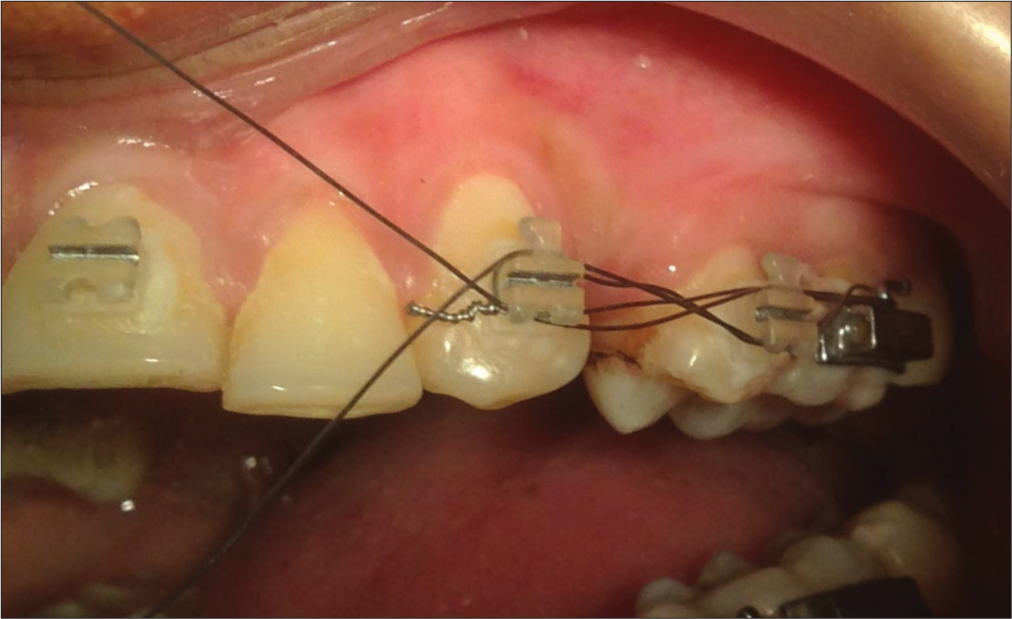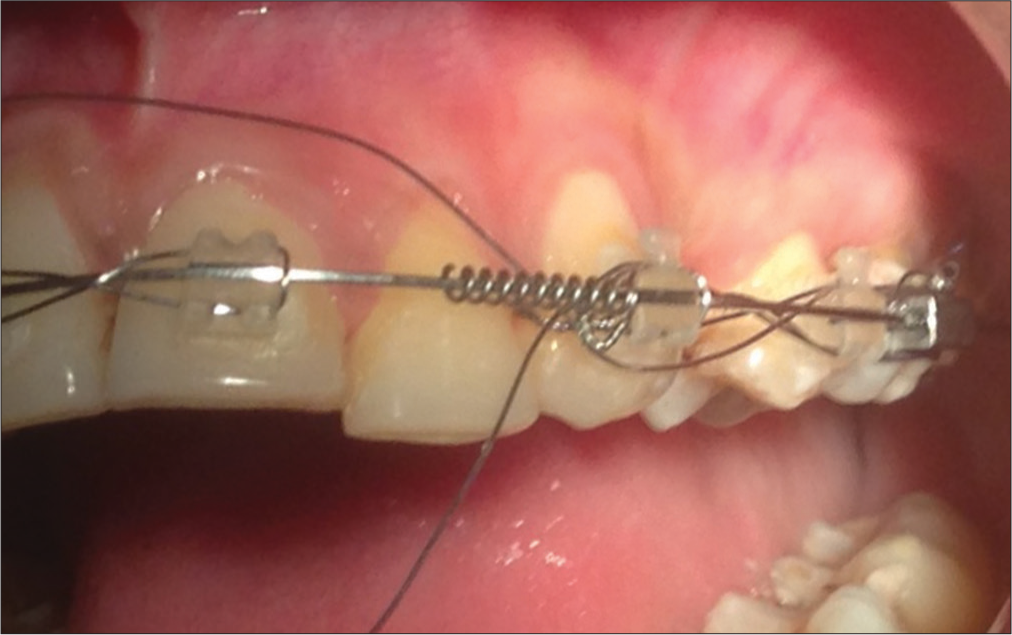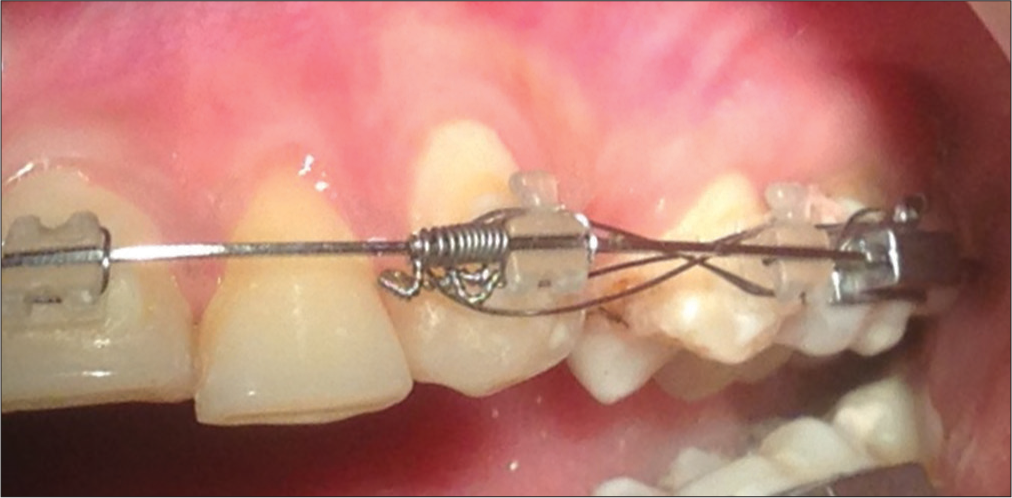Translate this page into:
Modified laceback for canine retraction
Address for Correspondence: Dr. Stephen Chain, Department of Orthodontics, Chandra Dental College, Barabanki, Uttar Pradesh, India. E-mail: steve911us@gmail.com
This article was originally published by Wolters Kluwer and was migrated to Scientific Scholar after the change of Publisher.
Abstract
This is a modified lace back to distalize canine. This modification overcomes the previous problems associated with the design.
Keywords
Canine
laceback
open coil
INTRODUCTION
The use of elastic has been used aplenty in orthodontics. They are beinig used in the actice ligation, active tie back and most commonly in the closure of spaces. The use of elastomeric modules as an adjunct to the laceback has been described in Systemized Orthodontic Treatment Mechanics.[1] This is to retract the canine and make space for the blocked lateral or to upright a tipped canine. The use of elastomeric comes with its demerits such as:
Increased amount of force
Rapid force degradation
Appliance removal while reactivating.
To overcome these problems we have devised a technique of active lace back using an open coil spring (3 mm × 020”) with 0.009” stainless steel ligatures (3M Unitek, Monrovia, CA 91016, USA). The ligature is placed on the brackets as the laceback with the ends crossed mesial to the canine before placing the arch wire [Figure 1]. An open coil spring of 8 mm is placed in the wire and the archwire is placed in the brackets and the canine bracket is ligated with the metal ligatures [Figure 2]. Mesial to the canine the open ends of the ligatures are brought forward and the coil spring is compressed with the ligature winding it onto the wire and closing the spring [Figure 3]. When the open coil spring unwinds itself it pushes the canine distally.

- The ligature wire is placed without the placement of the arch wire

- The arch wire is then placed with the open coil spring and the canine bracket is ligated with metal ligatures

- The ends of the ligatures are brought forward and tied with the compression of the open coil spring
This method is a modification to the original active laceback but with added advantages of Immediate reactivation of the laceback, Low force ratio and constant force application.
Financial support and sponsorship
Nil.
Conflicts of interest
There are no conflicts of interest.
References
- Systemized Orthodontic Treatment Mechanics. Edinburgh: Mosby; 2001.






